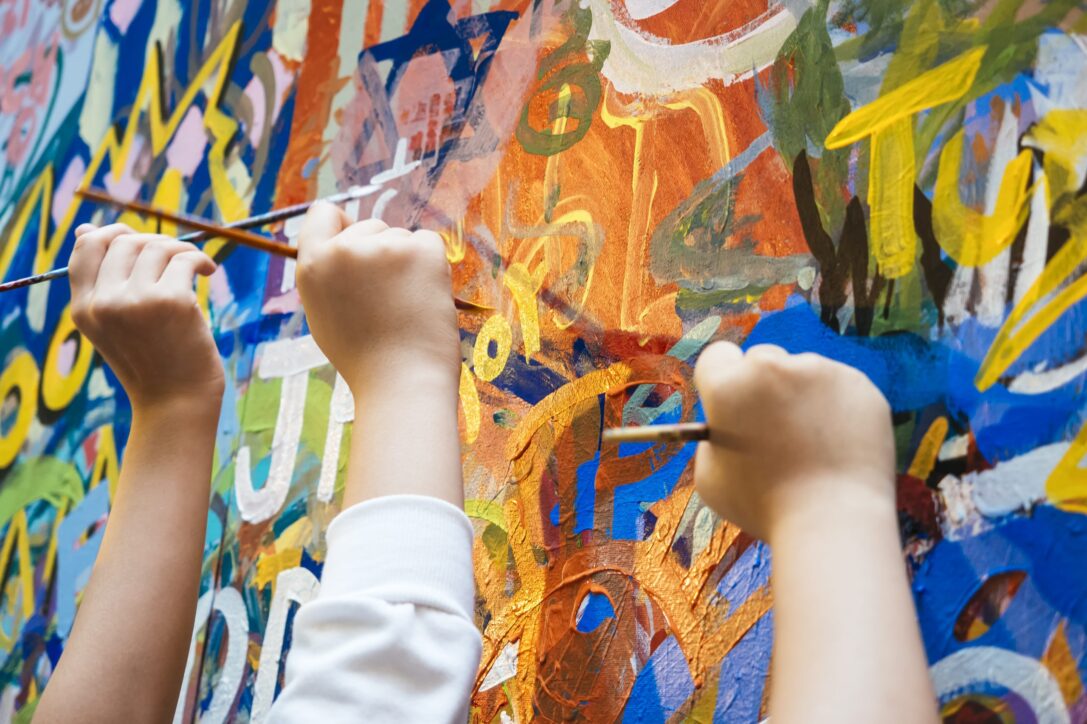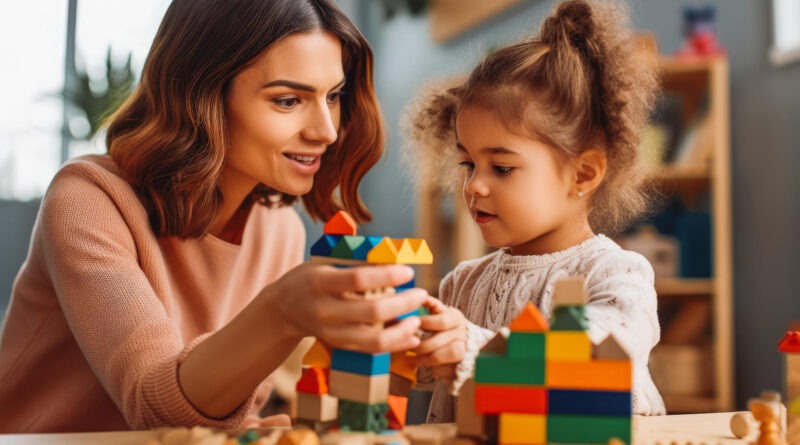Nurturing Creativity And Imagination In Early Years
Developmental psychologists the world over agree that children in their early years have imagination on overdrive. It’s in their nature. That’s why it’s pretty common to hear the words: “children do (or say) the craziest things”.
Left to their own devices, these little ones can indeed take their exploration a bit too far. But in the hands of a supportive parent or teacher? This curiosity’s a potent tool that can help grow their creativity and imagination in their early years.
So, are you looking to light up thar spark in your little ones? Good, whether you’re a parent or a teacher, you’re going to find this guide helpful in getting this right. Here are the tips.
-
Create An Enriching Environment

Did you know your home or classroom can be more than just four walls and a roof? Imagine it: a corner with a rainbow of books, another with art supplies that Picasso would envy, and maybe a nook where toys of all shapes and sizes come to life.
This isn’t just about keeping things colorful and fun. It’s about lighting that spark in their eyes, the one that says, “Wow, what can I create today?” Each item you introduce is like a key unlocking doors in their imagination.
Get this right and your little one can enjoy the many prekindy benefits, whether at home or in class.
-
Encourage Open-Ended Play
Remember the time when a cardboard box became a spaceship? That’s open-ended play for you. It’s not about the toy; it’s about the story they weave around it.
So, what’s on the menu? Building blocks that could be skyscrapers today and alien forts tomorrow, or dress-up clothes that transform them into kings, queens, or even dinosaurs.
This isn’t just play; it’s a rehearsal for life where they write the script, direct, and star in their own imaginative tales. Watching them lead these adventures? Priceless.
-
Foster Curiosity and Ask Questions

Source: montessori-academy.com
“Hey Jimmy, what do you think happens next in our backyard adventure?” or “How many different ways can you use a spoon besides eating?” Sounds fun? It is!
And it’s also a fantastic way to turn their little brains into big idea factories. Asking these kinds of open-ended questions isn’t just about getting answers. It’s about setting their thoughts on a journey with no limits. It’s like being a guide on a safari where each question uncovers a new, unexplored part of their imagination.
-
Introduce Arts And Crafts
Got a mini Picasso or a budding Georgia O’Keeffe at home? Join them in their world of arts and crafts. Picture this: your living room transformed into an art studio, with paper, paint, and clay everywhere.
As they draw, paint, or mold their masterpieces, watch their fine motor skills sharpen, and their imaginations soar. Who knows, you might just have the next great artist in the making!
-
Incorporate Music And Dance
Ever noticed how kids can’t help but move when they hear music? Indulge them a little. Turn your home into a dance floor or a concert hall.
Have daily dance-offs or sing-alongs. As they sway, tap, and twirl, they’re not just having fun; they’re developing a sense of rhythm and a love for music that could last a lifetime.
-
Read And Tell Stories

Source: thehansindia.com
You know how a child’s eyes light up at a tale of dragons and knights, or a story about exploring distant planets? That’s the power of storytelling.
When you read to them or, better yet, create stories together, you’re opening doors to new worlds. It’s a journey into imagination, where they learn new words, new ideas, and maybe, just maybe, start writing their own epic tales.
-
Limit Screen Time
“Kids these days, right?” It’s a line you’ll hear often, especially when it comes to screen time. Yes, this digital world has its perks, but hey, moderation is key.
Even experts at Mayo Clinic advocate for limiting screentime for the young ones. Balance is the trick – a little screen time, a lot of real-world play.
-
Provide Opportunities For Decision Making
Decision making – sounds serious, but guess what? Kids love it. Book or building blocks? Paint or play-doh? These choices might seem small to you, but they’re big deals for the little ones.
Each choice is a step towards independence and a boost for their creative brains. It’s not just about choosing; it’s about growing – growing confident, capable, and creative.
-
Celebrate Creative Efforts
Here’s the thing about creativity – it’s not about the perfect picture or the most symmetrical clay pot. It’s about the mess, the fun, and the wild ideas that come out of nowhere.
So, when your little Picasso shows you a painting that’s more splatter than art, applaud it. When your mini Mozart makes music that’s more noise than melody, dance to it. It’s about encouraging the effort, not just framing the end result.
-
Model Creative Behavior

Source: today.uconn.edu
Remember the saying, ‘monkey see, monkey do’? Well, it’s spot on when it comes to creativity. Your little ones are always watching. So, why not put on a show? Go to the dark corner in your garage and pull out those paintbrushes.
Strum that old guitar. Whip up your best dish. When your little ones see you diving into creative projects, they’ll want to jump right in. It’s like passing the creative torch – showing them that being imaginative isn’t just kid’s stuff, it’s a whole lot of fun for everyone.
Lead by example and watch as those creative sparks fly.
In Closing
There you have it, some of the ways you can help Samantha and Jamie become the next Picasso or Prince (of course depending on what they love). These tips will go a long way in helping you get it right, whether in the classroom or at home.
So, when they make that painting or write that verse to celebrate your birthday, engage and encourage them. This can go a long way in nurturing their creativity and imagination in their early days. And who knows what these lessons will do to them as they turn into beautiful, curious, and imaginative adults?



